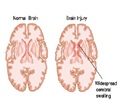About Stuttering/Stammering
Stuttering or stammering is a speech disorder classified under the broader term speech disfluencies. A
Stuttering can be embarrassing, can hamper communication, and generally affect a person’s quality of life.

Symptoms of stuttering may differ according to persons and situations. Rushed or disordered breathing, phonation or vocal fold vibration and over-tensing of the muscles around the lips, jaw and tongue making speech difficult or nearly impossible, are core stuttering behaviors. Secondary stuttering behaviors include physical movements like head-jerks and rapid blinking of eyes.
Stress, fatigue and excitement can aggravate stuttering. Addressing a group or talking on the telephone may increase a person’s stuttering, whereas, singing, reading aloud or speaking in chorus may temporarily check stuttering. Stuttering generally decreases when a person is relaxed.
Social Discrimination
Many people who stutter carry a double burden of personal feelings of frustration, anxiety or shame along with discrimination and sometimes, even ridicule from society. Many have reported experiences of being bullied and harassed –especially in their younger years, by peers and adults who failed to understand their suffering.
Stuttering does not affect intelligence. People generally assume stutterers are less intelligent because they take a longer time to respond or answer question. Truth is, it takes them longer to get words out and they are constantly searching for simple and easy words that they are confident they won’t trip on.
It is encouraging to observe that the list of famous people who experienced a stuttering disorder from mild to severe degree of intensity includes all time greats such as Isaac Newton and Charles Darwin, film stars like Marilyn Monroe, Bruce Willis, Julia Roberts, Rowan Atkinson (Mr. Bean) Hrithik Roshan, Sylvester Stallone, politicians like Winston Churchill, Joe Biden, Demosthenes and sport person Tiger Woods.
Stuttering Facts:
- An estimated 66 million people worldwide suffer from the effects of stuttering
- About 3 million Americans stutter
- It occurs mainly in children between 2 and 5 years of age while they are still developing language skills
- Twice as many boys stutter as girls
- Most children outgrow stuttering as they grow up
- Roughly 1% or less, of adults stutter in America
There is no medical cure for stuttering. Parents generally panic when they find their child beginning to stutter. Fact is, most children get over stuttering on their own, by the time they are five or six years old without any stuttering treatment. If a child's stuttering lasts longer than six months, or beyond age 5, speech therapy may prove useful to help decrease stuttering. Parents can facilitate their child’s freedom to speak freely by providing a relaxed atmosphere at home.
Stuttering Causes
The precise mechanism is not understood but there are two common types of stuttering. Developmental stuttering is the most common kind of stuttering and is observed in young children while they are learning to speak and acquire language skills. According to some scientists when a child's verbal demands are more and its language and verbal skills are less, the child begins to stutter. Developmental stuttering may be hereditary but scientists have not been able to identify the specific gene or genes behind stuttering.
Neurogenic stuttering, like apraxia of speech and
Psychogenic stuttering may result from a traumatic emotional experience or some psychological problems. This type of stuttering is very rare, although at one time all shuttering was believed to be psychogenic in nature.
Stuttering Diagnosis
A speech-language pathologist (SLP) who is trained for testing and treating voice, speech and language disorders, usually diagnoses stuttering.
The speech-language pathologist will explore a variety of factors, including the child’s case history—such as, when the stuttering was first observed and if any particular event triggered stuttering. The SLP will also analyze the child’s stuttering behaviors, evaluate the child’s speech and language ability and the impact of stuttering on the child’s life.
The SLP will consider the family’s history of stuttering, whether the stuttering spell has lasted beyond six months and whether the child exhibits parallel speech and language problems, before trying to determine if the child’s stuttering behavior is likely to continue or disappear as the child grows.
Treatment Options
Treatment options include direct and indirect approaches aimed at minimizing the occurrence of speech disfluency as well as reducing its impact on the lives of people who suffer from the disorder.
While speech therapy can cure stuttering in very young children, complete recovery in older children and adults is less likely. Stuttering treatment for adults will train them to accept stuttering and emphasis will be on minimizing its negative influences in daily activities.
In addition to speech therapy, clinicians encourage their young clients and their families to join support groups for stuttering to cope with the debilitating effect of the disorder.
Media advertisements offering stuttering “cure” have a strong emotional appeal for stutterers, but the long-term efficacy of such treatments is rarely examined. However when speech pathologists provide these treatments, they emphasize that they are not “cures” but therapy to overcome stuttering.








